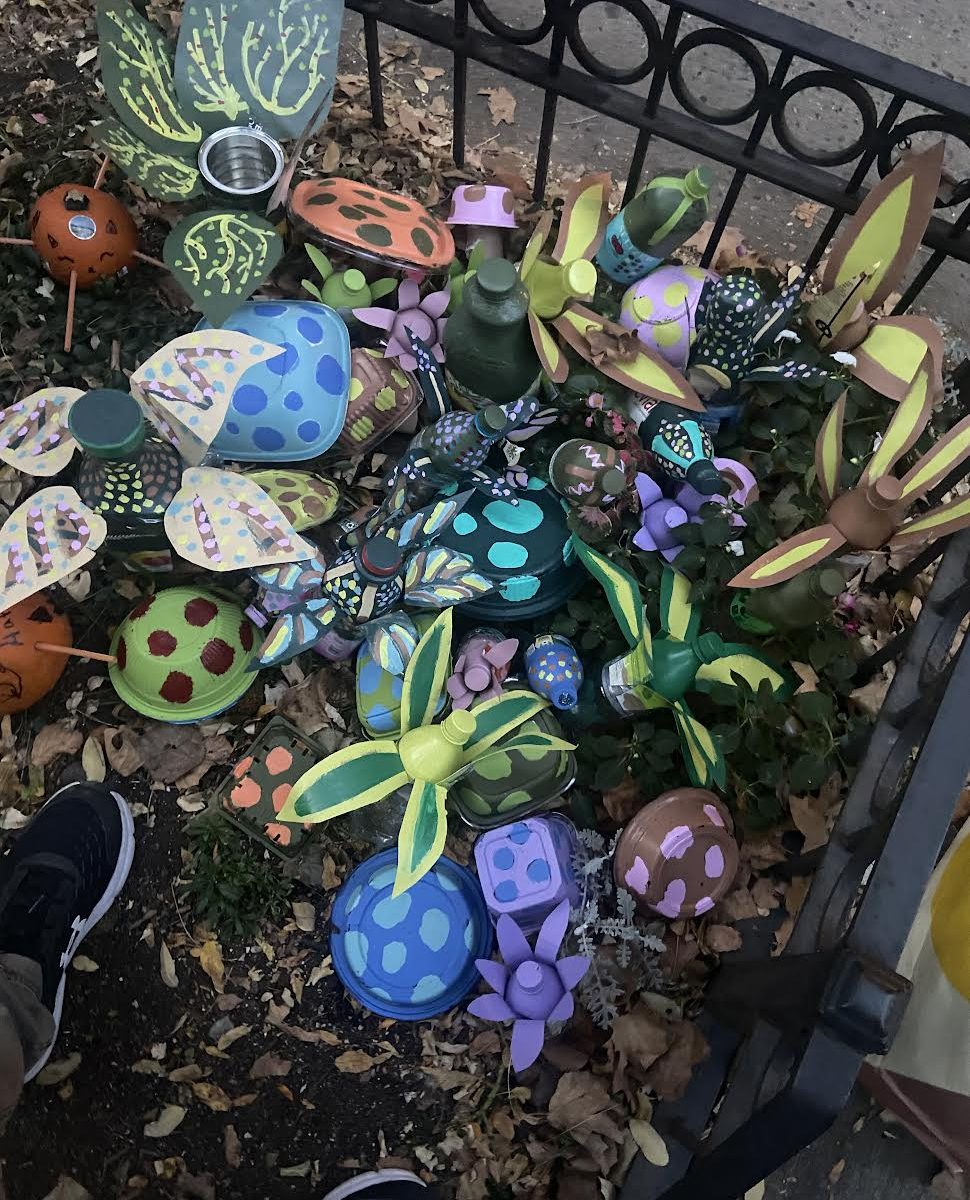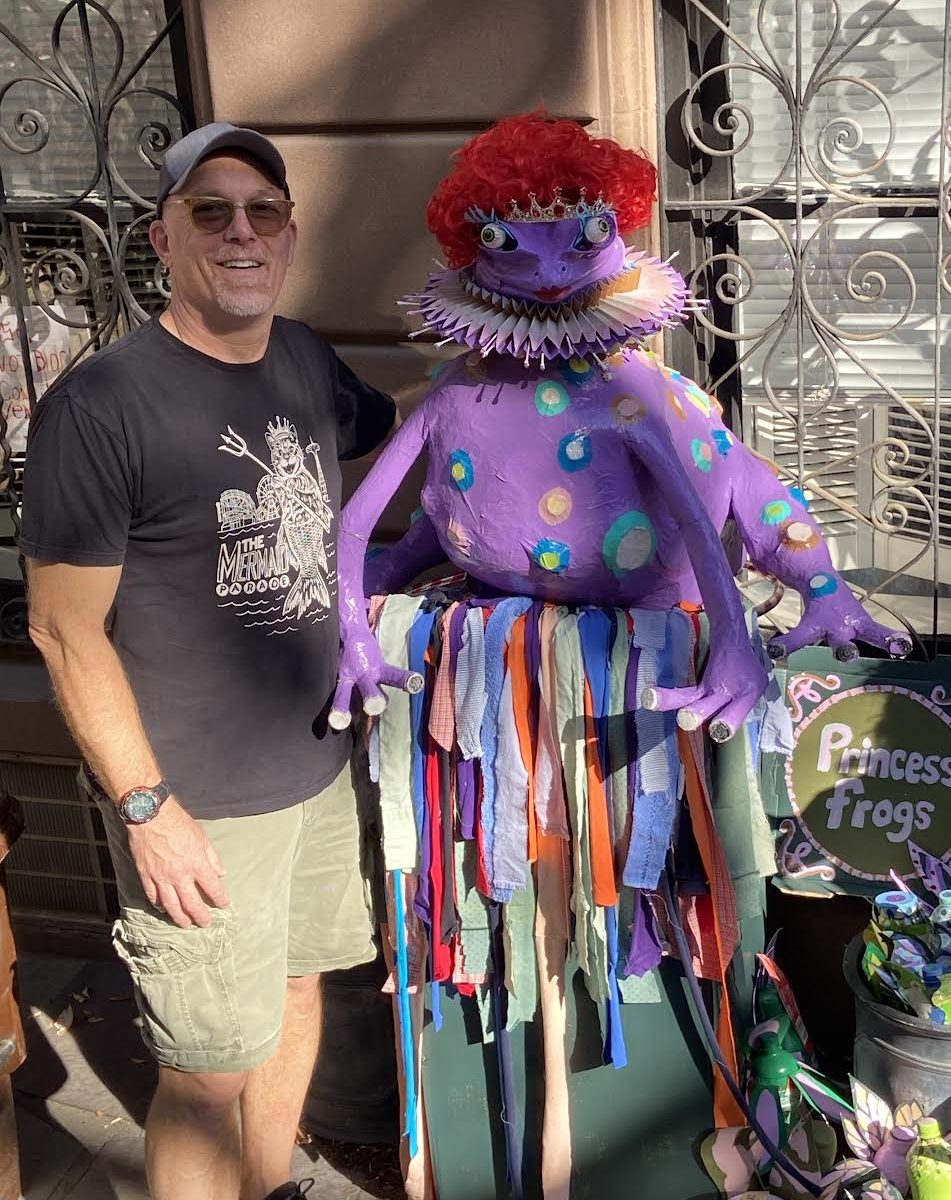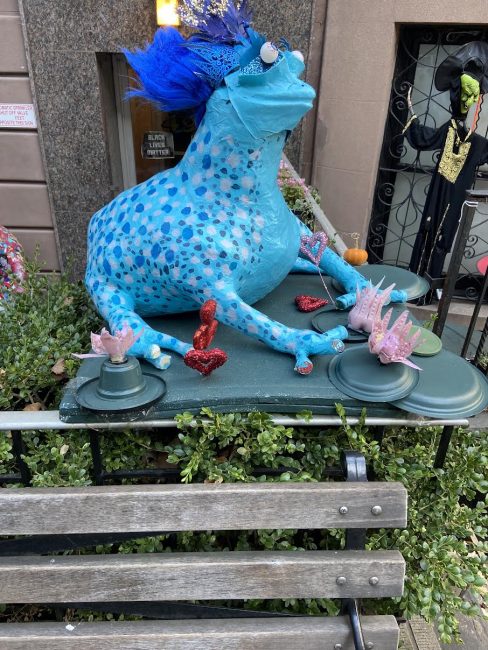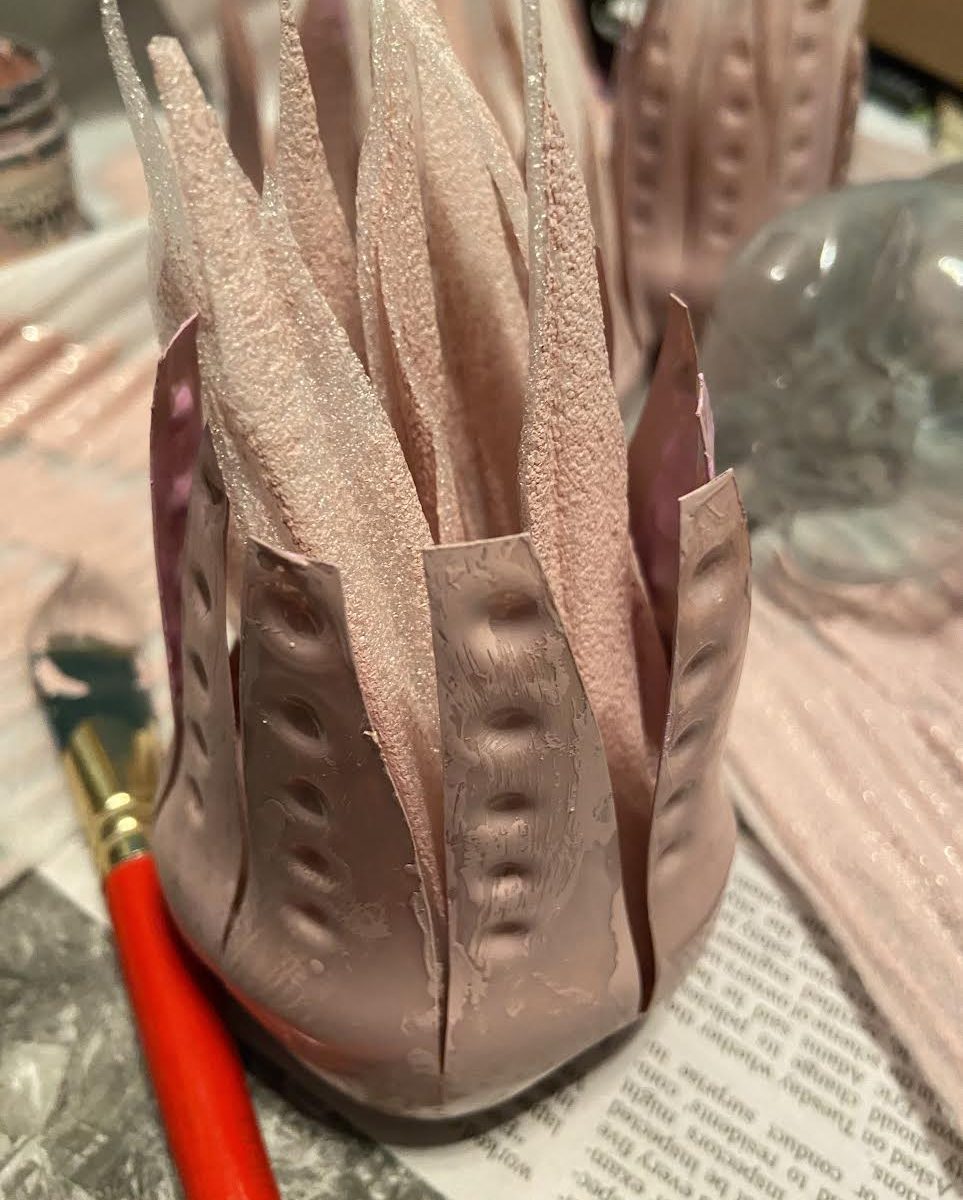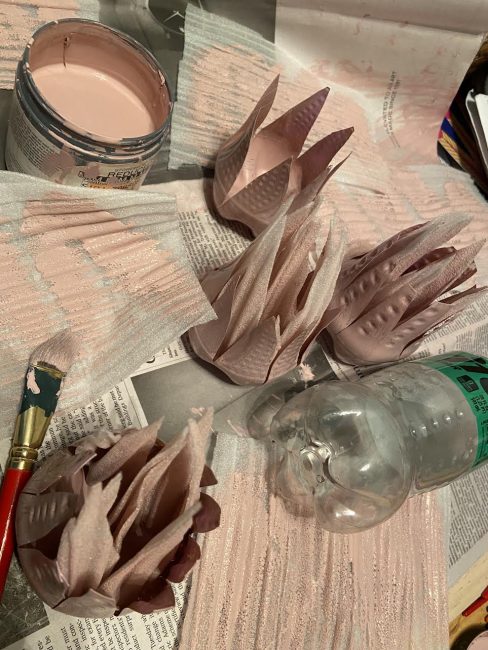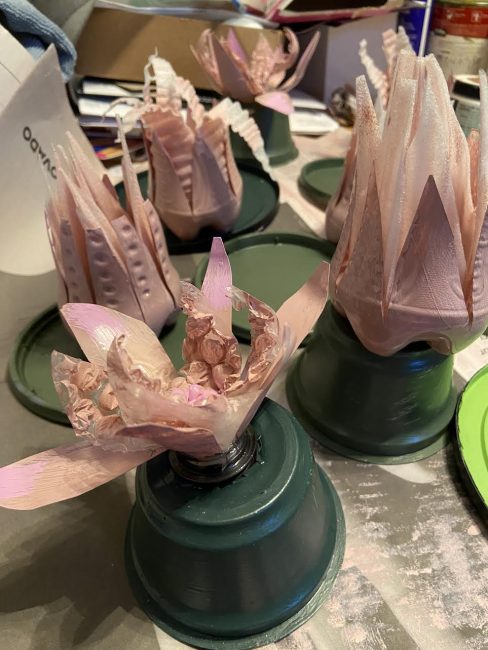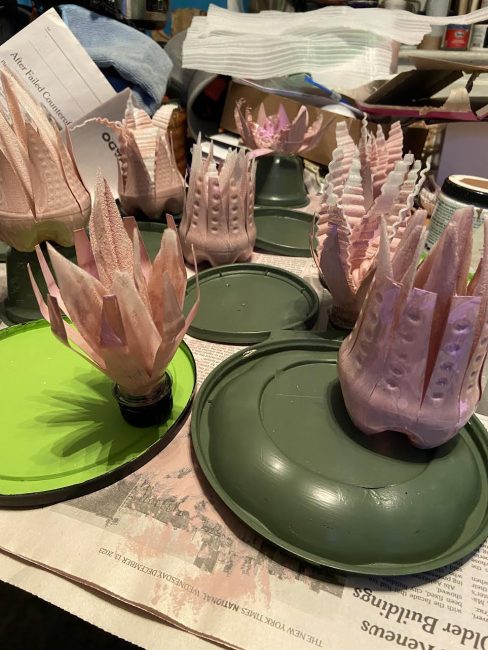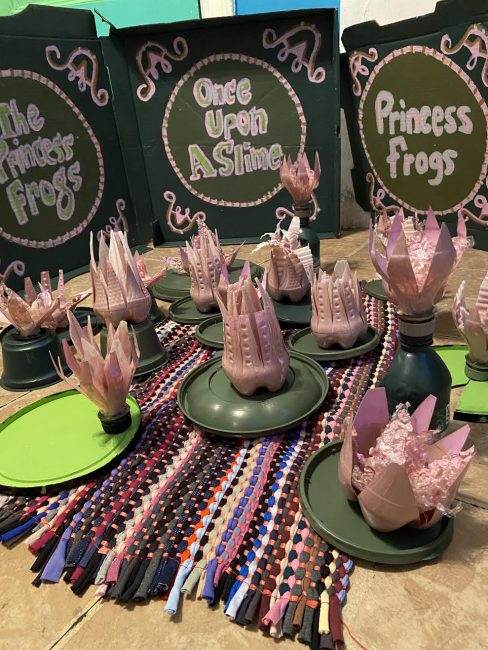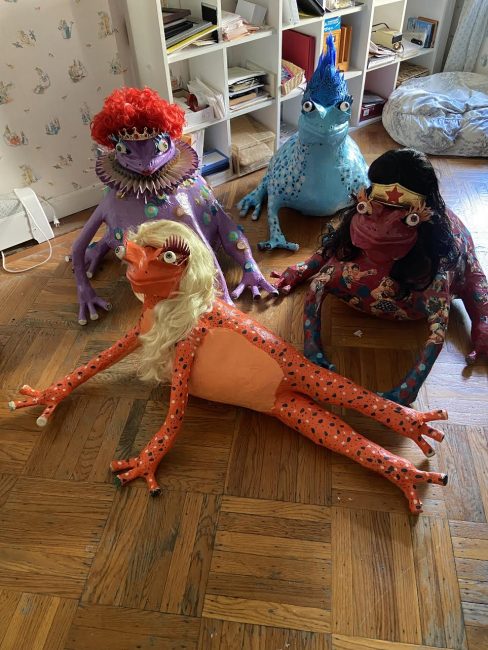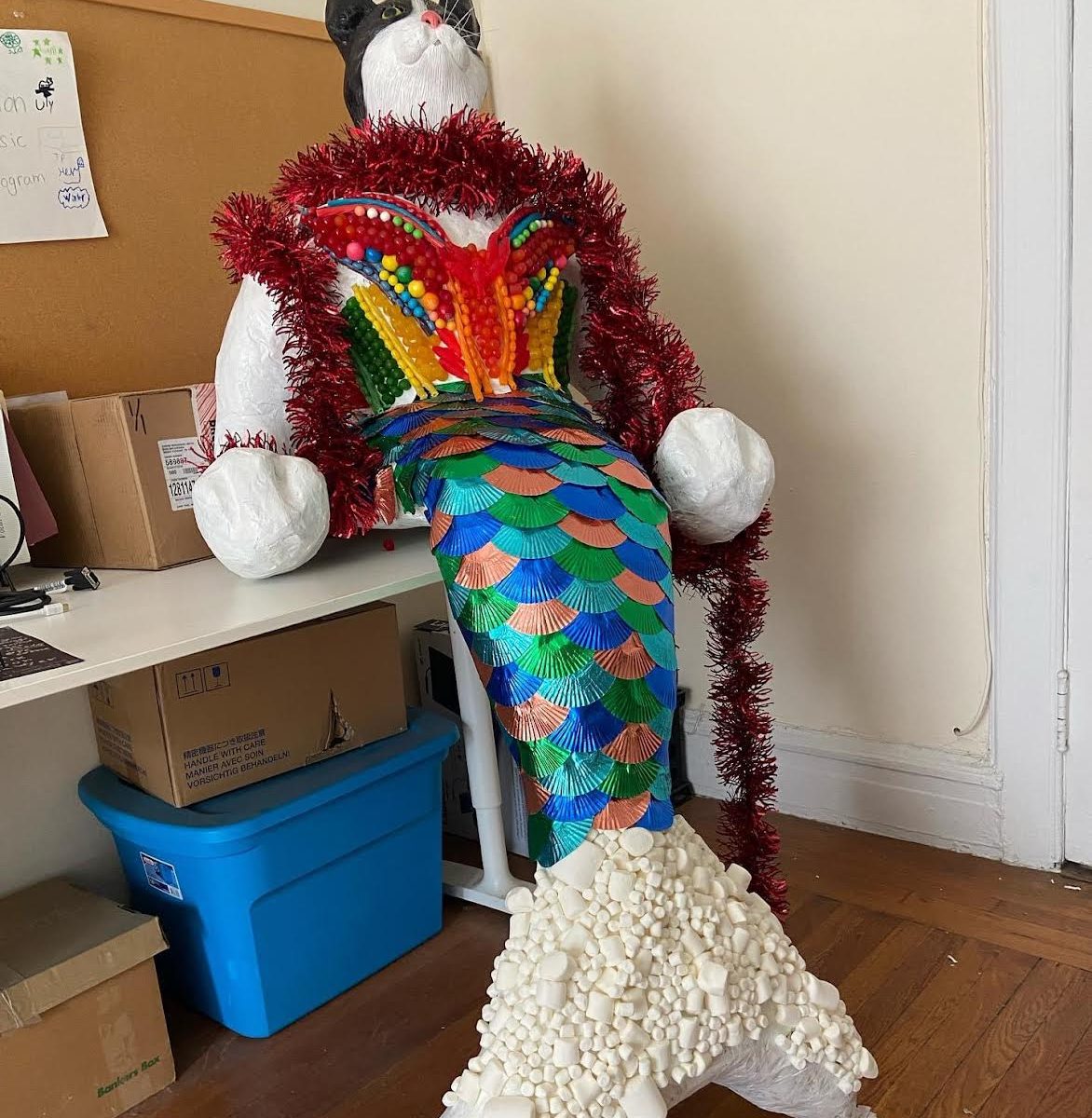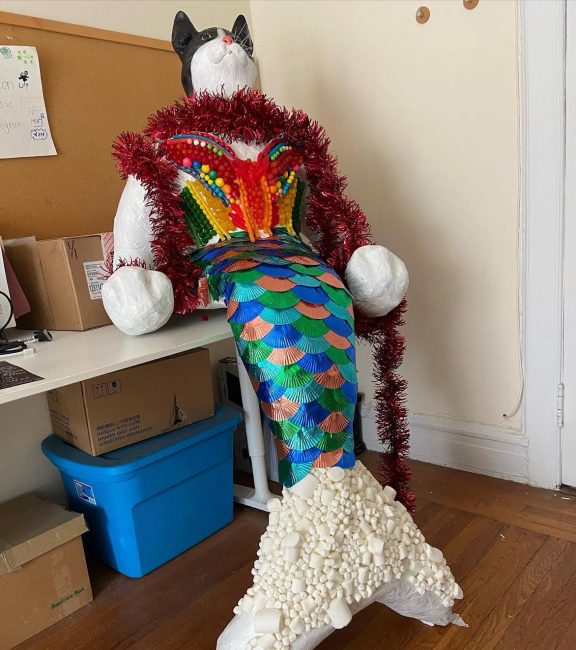According to the Los Angeles Times, Coca-Cola and PepsiCo misrepresent the environmental impact of their plastic bottles.
I used art, creating my Halloween displays with single-use plastic, to draw attention to the alarming prevalence of single-use plastics in our lives.
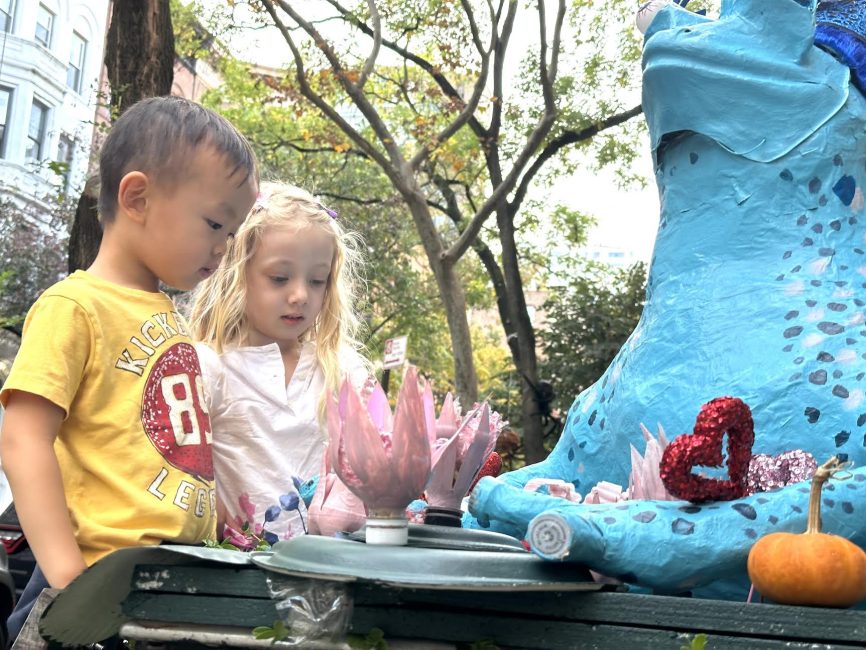
The two companies are among the world’s top plastic polluters. Currently, just 9% of the world’s plastics are recycled. The rest are incinerated and set to landfills or in rivers and oceans. Experts say that almost 3.5 billion bottles are left unaccounted for and can only be recycled once or twice.
One of the other major concerns related to the abundance of single-use plastics is our health. The tiny particles in plastics known as microplastics have been detected in every ecosystem on the planet. Microplastics have been found in the brain, heart, lungs, blood, and semen. Microplastics have been linked to an increased risk of diabetes because they contain additives that act as endocrine disruptors (EDCs), which can alter the body’s hormone system and impair glucose homeostasis.
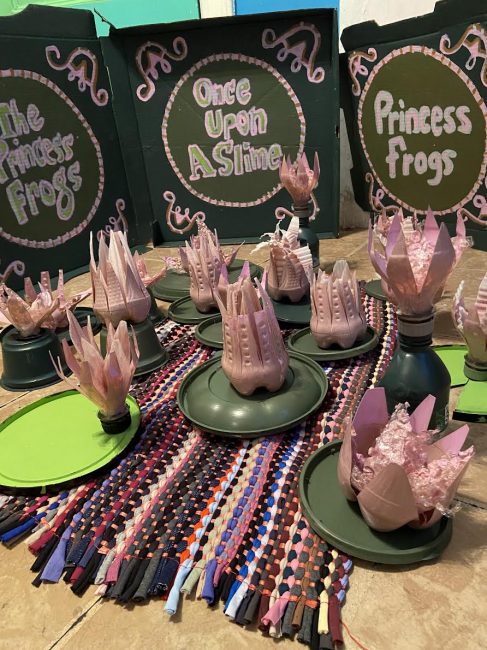
Collecting my single-use plastics, including water bottles, take-out food containers, cups, straws, and food packages over two months, really opened my eyes to the staggering amount of trash I contribute to the environmental crisis.

My single-use plastic swamp comprises plastic bottles and cardboard packaging that I painted to resemble foliage.
Everything used to make my displays, except the wigs and crowns, is made from recycled materials – water bottles, pizza boxes, FedEx boxes, damaged comic books, broken lamp shades, paper towels, toilet paper rolls, New York Times newspapers, bubble wrap, coffee cans, lids, and packing foam.
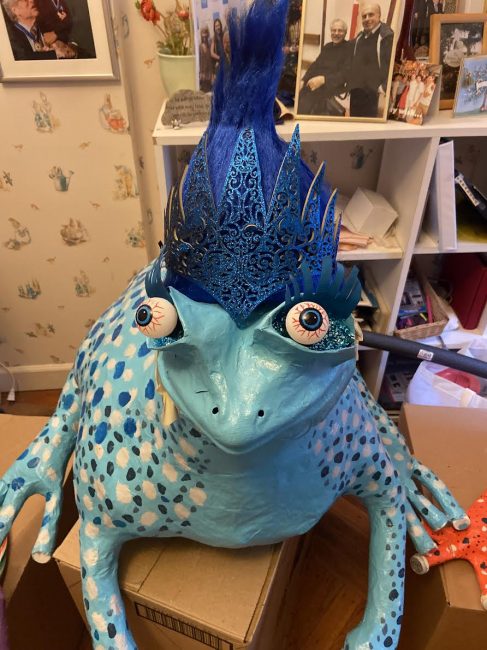
If you’re concerned about the abundance of single-use plastics and their harmful effects, focus on reducing or replacing one plastic item at a time, like your daily iced coffee container. You can also bring your reusable water bottle, coffee mug, and utensils when you go out.
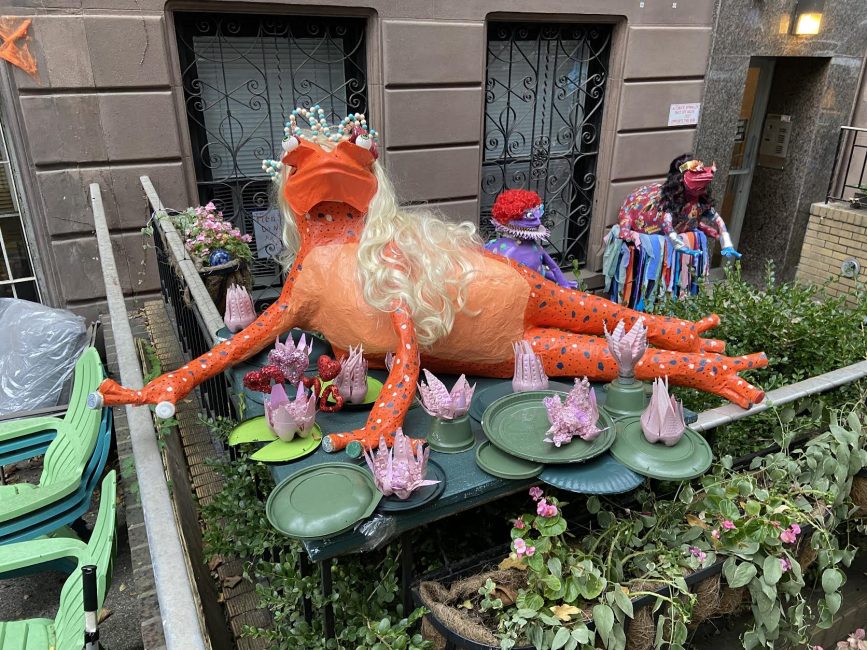
Avoid buying new clothing, especially polyester, which is spun from plastic. Instead, look for secondhand options or natural fibers like cotton, wool, rayon, or silk.
Plastic containers can be reused for years, but don’t use them for hot foods or liquids, and don’t microwave them.
Please do some research to learn more about the harmful effects of single-use plastics.


